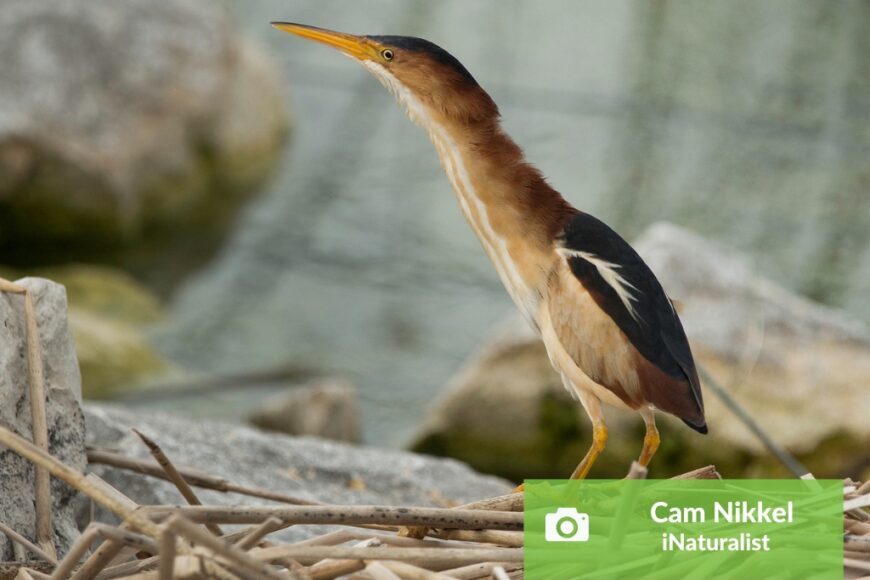Dawson Trail Dispatch, written by Norm Gregoire, April 2024
Page 12 https://issuu.com/dispatch222/docs/dawson_trail_dispatch_april_2024
With April bringing warmer weather, we are starting to see the first signs of spring. Some of the biggest changes we notice in the tall-grass prairie are with the arrival of various bird species. They are starting to fly north to find breeding and nesting areas, and many choose southeastern Manitoba to do so. Although some species of birds are a common sight, we are lucky to live in an area that plays host to some more elusive birds, such as the least bittern.
The least bittern is North America’s smallest member of the heron family, with a wingspan of 45 cm and a weight of only eighty grams. The least bittern has a dark crown extending along its back, a warm brown tail, and pale underparts with pale brown stripes. Breeding males appear darker on the upperparts. As with all herons, least bitterns have a hunched appearance, long legs, and a long, pointed yellow bill.
Least bitterns are found in swamps, marshes, and small bodies of water where aquatic food sources are plentiful and dense vegetation grows. Least bittern uses vegetation such as reeds and cattails to hide amongst when threatened. When alarmed, this small heron will point its beak up in the air and sway back and forth, mimicking the dense vegetation around it as it blows in the wind.
When you combine this unique camouflage technique with the fact that the least bittern is very shy, it is no wonder they are seldom seen. The main reason that the least bittern is seldom seen in our area is likely due to a very small population. Although it can be hard to estimate populations, it is thought that there are only a few thousand least bitterns throughout Canada.
Being an elusive bird with a small Canadian population, there is much that we don’t know about the least bittern. Most naturalists think that if a body of water can provide a suitable place for the least bittern to nest and raise a brood, then it is most likely a healthy body of water. This sort of species can be known as an indicator species.
When we don’t see a species regularly, it can cause us to forget the importance that the species may have throughout its ecosystem. It is important to keep the biodiversity of an ecosystem high. The least bittern is part of that diversity.
Adventures with Nature Norm
The Shared Legacy Partnership, with sponsorship from Southern Health, is leading a new monthly program, “Adventures with Nature Norm.” Hosted by yours truly, the point of the program is to get more community members outdoors and involved in nature. Free binoculars and walking poles are provided. The first day out will be Saturday, April 20th, from 10 a.m. to 12 p.m. at the Agassiz Trail seven kilometers west of Vita. Each walk will have a theme; for the inaugural walk, we are “welcoming back spring,”.
For more information on least bittern and Adventures with Nature Norm events in the tall-grass prairie natural area, please visit www.sharedlegacymb.ca or contact me at info@sharedlegacymb.ca.

